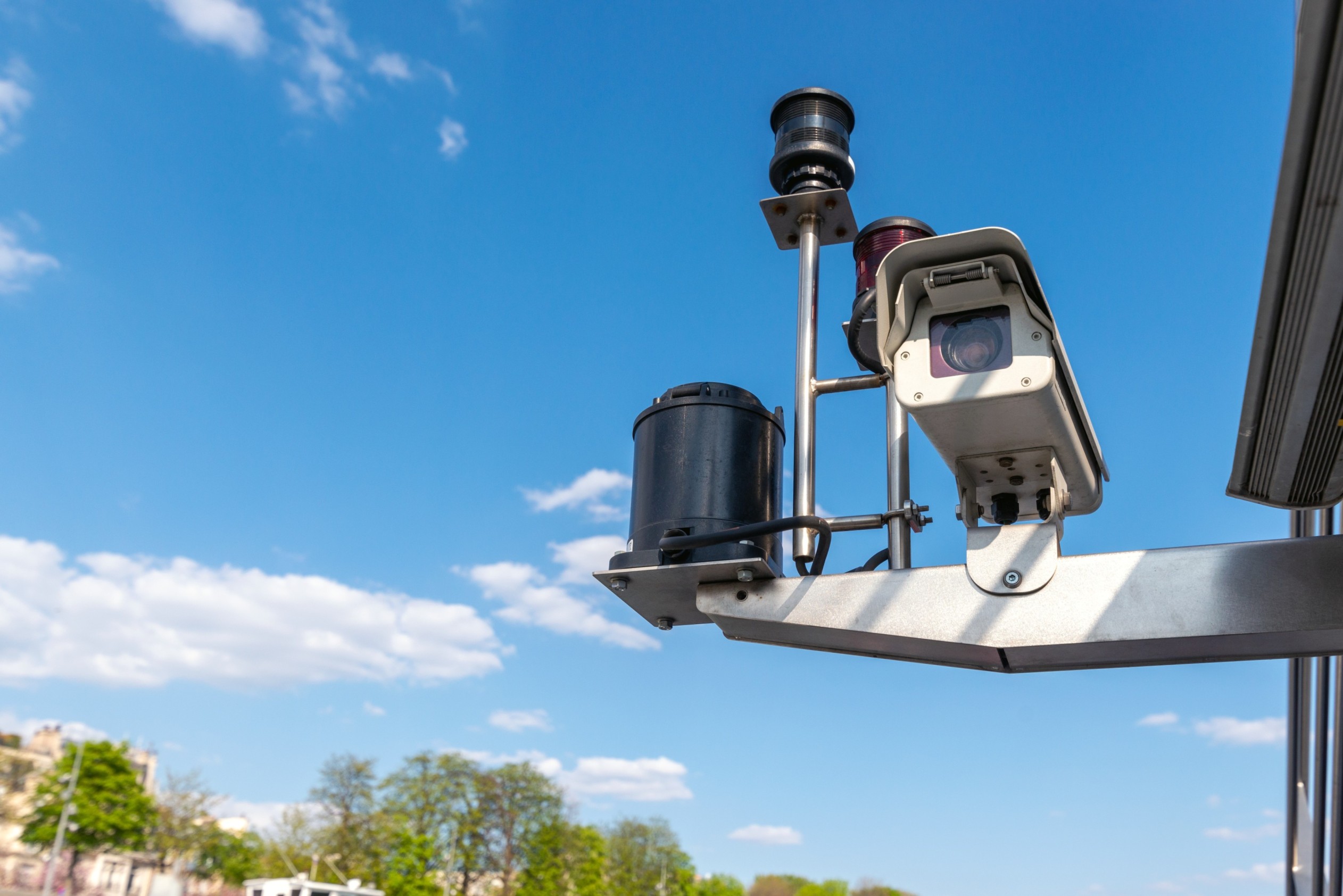Likely one of the most frequent traffic citations issued in Kansas City is speeding. Law…
Kansas City Radar Devices: Key Features and Accuracy Levels

Kansas City speed limit enforcement is mostly based on radar technology. Police officers employ radar devices to track the speeds of vehicles driving on city streets and highways. The technology is accurate and fast, allowing officers to easily identify speeding drivers in real-time. Drivers and police officers are both better served by understanding how to operate radar devices, what they can do, and how accurate they are.
What is the function of Radar Devices in Kansas City?
Radar devices are employed by the Kansas City police to gauge the speed of a vehicle without coming into physical contact with it. Radar devices send radio waves towards a speeding vehicle. The waves bounce off, and the radar device estimates the speed from the Doppler effect—the change in frequency between the received and transmitted signal.
Radar units are used during regular patrol, in speeding areas, in school zones, and on highways. The rapid readings of radar units allow officers to arrest drivers nearly instantly after they detect an offense.
Large Radar Units Used in Kansas City
Kansas City police agencies make use of a wide range of radar units. Each has a different purpose and usage:
- Stationary Radar: Used when an officer is parked in his vehicle. Radar picks up on the moving vehicle speed.
- Moving Radar: Mounted on police cars and used while the vehicle is moving. It picks up on approaching and same-direction traffic.
- Handheld Radar Guns: Used by officers outside their vehicles, typically near schools or intersections.
- Fixed Radar Units: Mounted on poles or traffic light poles to automatically pick up speeding vehicles. They are typically wired into traffic cameras.
All models possess a unique role of navigating Kansas City’s congested roads and making sure there is no congestion in traffic.
Major Features of Modern Radar Equipment
With time, radar technology has improved, and equipment has become faster, smaller, and more accurate. Models utilized by Kansas City police are currently lightweight and easy to use and maintain.
- Instant-On Mode
This feature enables officers to flash the radar briefly to instantaneously measure the speed of a car. It deters drivers from detecting the radar ahead using their detectors.
- Dual Antennas
Some models incorporate two antennas, a front and a rear, to survey more than a single lane at a time.
- Digital Display
Advanced radar units give clear daytime or nighttime readings. It is simple for officers to read speed data at a glance.
- Audio Tones
The radar emits a pitch-varying tone based on the speed of a vehicle. Officers can pursue speed without looking at the screen.
- Selective Targeting
Later models lock onto a single vehicle even when other vehicles are being targeted.
- Self-Testing Function
Devices perform internal verification before and after usage for verification.
All these serve to provide equitable speed monitoring and regular enforcement.
Accuracy of Radar Equipment in Kansas City
Radar is highly accurate but relies on accurate setup and operation. Proper operation, and radar can accurately measure speed to within ±1 mile per hour of actuality.
Police ensure accuracy in equipment through the following procedures:
- Calibration: Calibration is done daily through the use of tuning forks that replicate preset speeds.
- Certification: Police undergo training and certification in the safe use of radar equipment.
- Environment Check: Police choose open space with no signal reflection or obstruction.
- Regular Maintenance: Each device is inspected periodically to prevent technical malfunctions.
A faulty calibration or improper operation might result in erroneous readings. In order to prevent this, Kansas City police officers maintain records of the calibration for each radar unit.
Factors Influencing Radar Accuracy
Although precise, radar readings are influenced by external factors. Some of the general ones are explained below:
- Weather Conditions:
Rain, snow, or fog might distort radio waves and reduce the accuracy.
- Reflected Signals:
Waves may bounce off large objects like trucks, metal signs, or cars in close proximity.
- Multiple Targets:
A second car can be detected by radar if cars are abreast on the street.
- Operator Error:
Reading may be influenced by incorrect aiming or orientation.
- Obstructions:
Trees, bridges, or roadblocks can reflect radar waves.
If any of these issues arise, Kansas City traffic defense lawyers often review radar readings to determine whether the reading is correct.
How the Kansas City Police are Fair with Radar Enforcement
Kansas City police, to be fair, have rigorous record-keeping and radar testing policies. Police officers must:
- Check calibration prior to and after a shift.
- Keep written records for radar tests.
- Only use radar in open and safe spaces.
- Mark accurately recorded the car that departed the reading.
Radar readings can be used as evidence in court if these policies are followed.
Radar vs. Lidar: What’s the Difference?
Whereas radar makes use of radio waves, Lidar (Light Detection and Ranging) makes use of laser light. Radar is better suited for detection over long distances or in the instance of several vehicles, but Lidar offers point accuracy for an individual vehicle.
Kansas City police departments primarily employ radar on the highways and Lidar on city streets where room is limited and sight lines are narrow. Both devices keep roads safe and reduce speed-related crashes.
How Drivers Can Respond to Speed Tickets from Radar
If you are given a ticket from radar, you don’t necessarily have to take it. You can contest it in court. A traffic attorney in Kansas City can help you by:
- Reviewing maintenance and calibration records.
- Reviewing the training records of examiners.
- Reviewing environmental conditions.
- Looking for likely human error or interference signatures.
Radar is strong evidence, but it must meet the proper technical and legal standards in order to be used in court.
Why Radar Accuracy Matters
Radar accuracy keeps fair traffic enforcement. One mistake can fine one’s driving record, insurance rate, and even employment. Kansas City radar protocols keep this from occurring with training, certification, and documentation.
Accurate sound radar readings protect the public and law enforcement officers from wrong conclusions. They also enhance confidence in Kansas City traffic law enforcement.
Final Thoughts
Radar technology forms the basis of Kansas City traffic enforcement. It is a combination of speed, precision, and convenience to allow officers to deal with congested highways. With frequent testing, proper use, and stringent legal standards, radar technology is one of the most effective methods of providing Kansas City’s roads with safety.
For drivers, a little knowledge of radar technology—and what affects its accuracy—may be the distinction between freedom and a ticket. Awareness and education result in improved driving and fairer enforcement for all.
Frequently Asked Questions (FAQs)
1. Are Kansas City police radar units precise?
Radar devices can estimate speed to around ±1 mph if properly calibrated and utilized.
2. What type of radar do Kansas City police use?
Officers use mounted, mobile, handheld, and stationary radar equipment depending on location and need.
3. Can weather affect the accuracy of radar?
Yes. Heavy snow, fog, or rain can degrade radar signals and cause inaccurate readings.
4. How often are radar units calibrated or checked?
Police calibrate and check police radar units at the start and end of each shift.
5. Can radar readings be disputed in court?
Yes. The attorney can dispute accuracy by investigating calibration records, training of officers, and environmental conditions.

